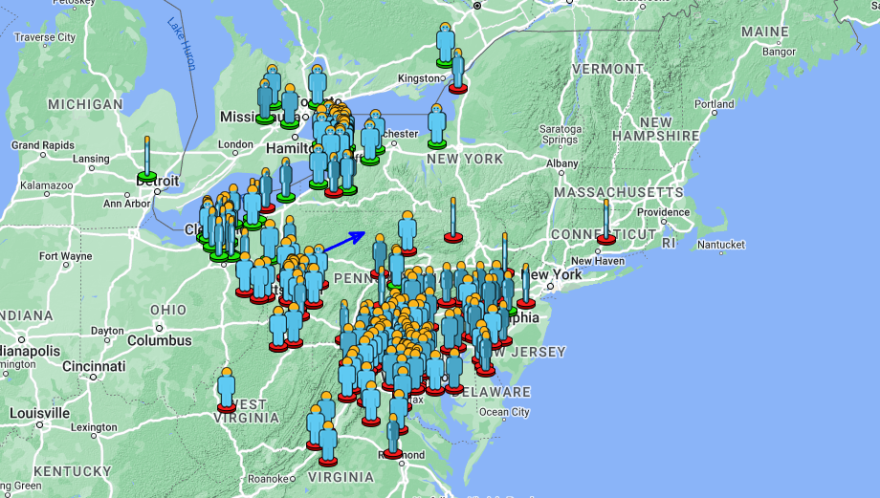BETHLEHEM, Pa. — A bright meteor raced across the skies Wednesday evening, with people near the Lehigh Valley reporting the sighting.
The American Meteor Society said the 6:50 p.m. event — a rock from space entering the Earth’s atmosphere — was a fireball, or a particularly bright meteor.
According to reports, it could be seen from Virginia to New York and even in parts of Canada.
The closest sightings reported near the Lehigh Valley occurred in Gilbertsville, Montgomery County, and in Perkasie, Bucks County.
The fireball caused quite a stir on social media, where posts described the spectacle or asked other skywatchers to confirm what people had witnessed.
“Who all on the East Coast witnessed that huge fireball meteor a few hours ago?” asked the Live Storm Chasers Facebook account.
The post led to several eyewitness accounts, including video posted from security cameras in Virginia and a report of the sighting in Elverson, a small borough in Chester County, Pennsylvania.
AMS collects 225 reports

“We received 225 reports about a fireball seen over Connecticut, Delaware, Maryland, Massachusetts, Michigan, New Jersey, New York, Ohio, Ontario, Pennsylvania, Virginia and West Virginia on Wednesday, February 21st 2024 around 23:49 UT,” the American Meteor Society said on an event page tracking the sightings.
The map suggests the meteor was traveling from southwest to northeast through western Pennsylvania before it disintegrated.
“Several thousand meteors of fireball magnitude occur in the Earth’s atmosphere each day," the American Meteor Society says on its website. "The vast majority of these, however, occur over the oceans and uninhabited regions, and a good many are masked by daylight.”
Last September, a fireball also was reported across parts of Pennsylvania and was seen from Virginia to New York.
View the chart below from the Pennsylvania Department of Conservation and Natural Resources to learn common meteor showers by name and date:


